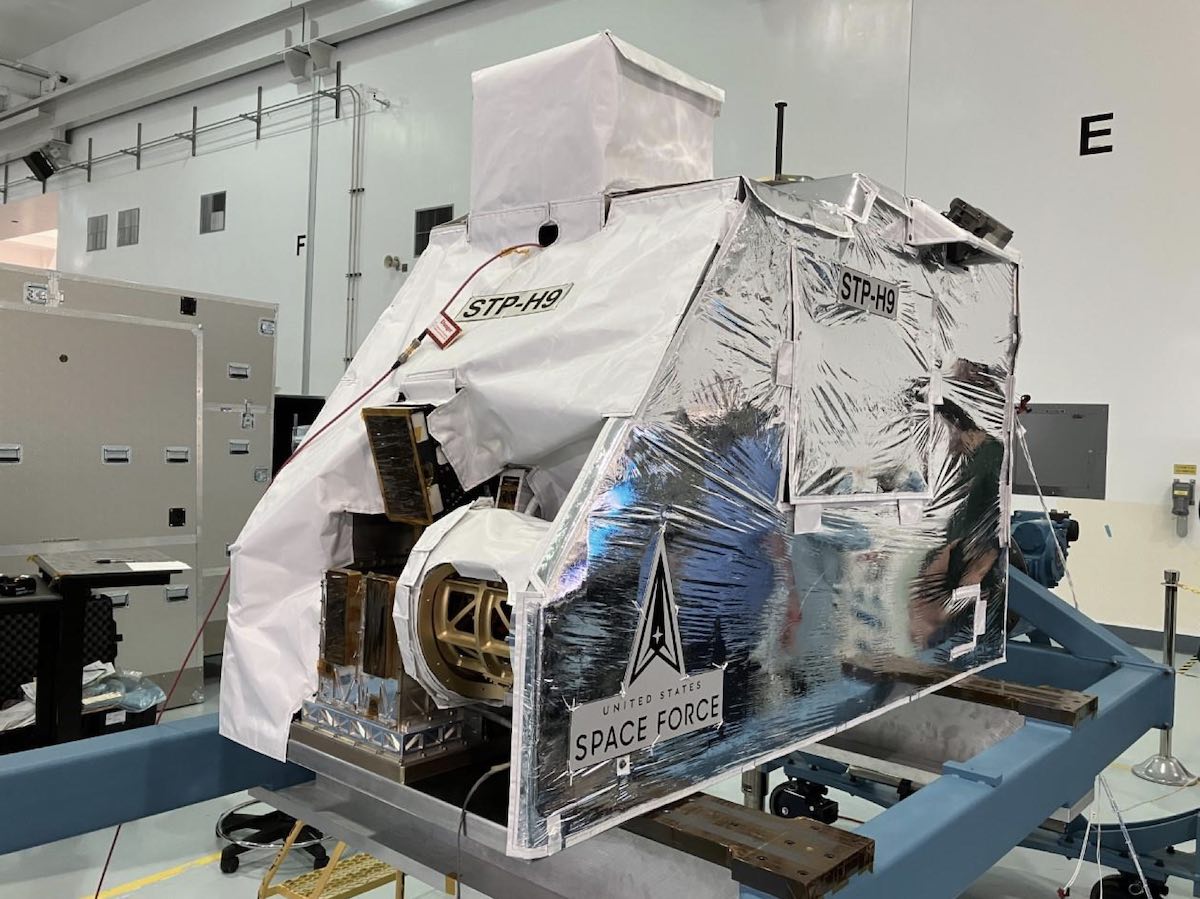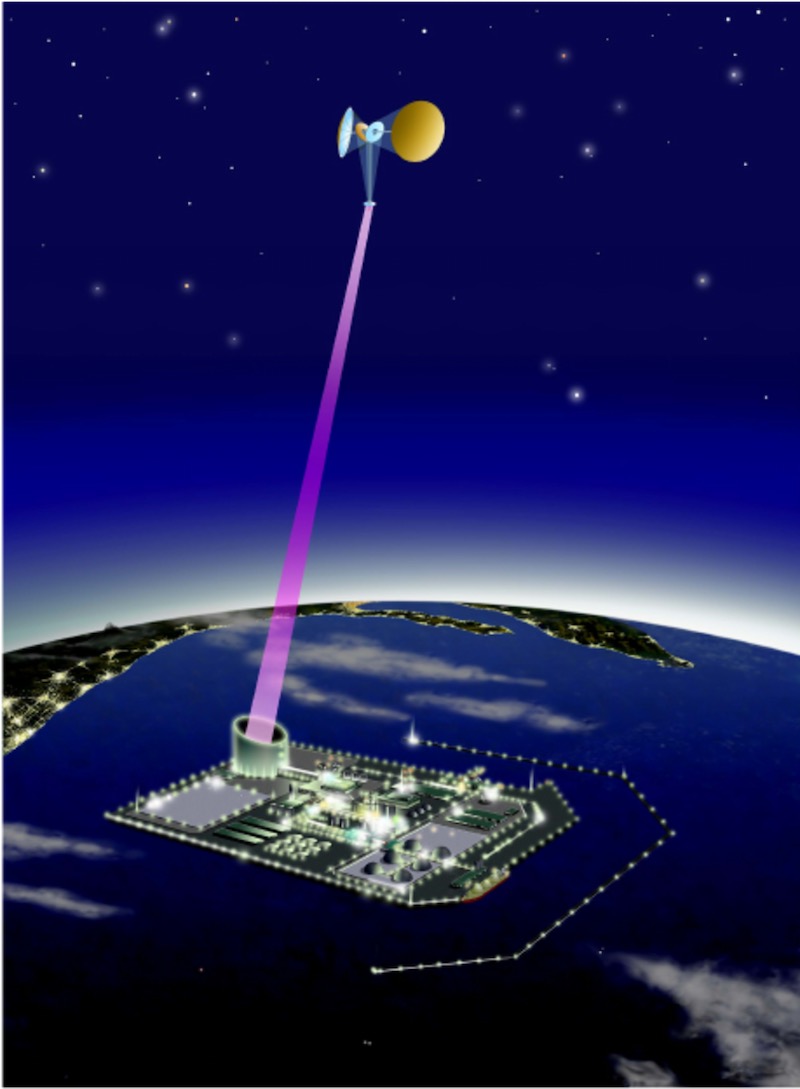
SpaceX’s next resupply mission to the International Space Station is set for liftoff Tuesday night from Kennedy Space Center, hauling more than 6,300 pounds of cargo to the complex, including a $35 million, half-ton payload package for the U.S. military with experiments ranging from in-space laser power beaming to weather monitoring.
The military experiments are aggregated on a testbed developed by the Space Test Program, which oversees the Defense Department’s research and development efforts in space. It is part of a series of Space Test Program payloads that have launched to the space station on SpaceX cargo missions.
There are eight military-sponsored research investigations on the next in the line of Space Test Program packages heading to the space station, called STP-H9. The STP-H9 payload, which weighs more than 1,100 pounds (500 kilograms) at launch, is awaiting liftoff in the rear cargo hold of SpaceX’s Dragon resupply freighter awaiting liftoff Tuesday night.
SpaceX’s Cargo Dragon capsule is mounted atop a Falcon 9 rocket, ready for launch from pad 39A at NASA’s Kennedy Space Center in Florida at 8:30 p.m. EST Tuesday (0030 GMT Wednesday). The mission, known as CRS-27, will be SpaceX’s 27th resupply mission to the International Space Station under a multibillion-dollar contract with NASA, which currently covers SpaceX cargo flights through the CRS-35 mission scheduled for 2026.
The 215-foot-tall (65-meter) Falcon 9 rocket will head northeast from Kennedy Space Center to line up with the orbital plane of the space station. The rocket’s first stage booster, flying for the seventh time, will target a landing on a SpaceX recovery platform in the Atlantic Ocean around seven-and-a-half minutes after liftoff.
The Falcon 9’s second stage will deliver the Dragon cargo capsule into orbit, and release the spacecraft about 11-and-a-half minutes into the flight. Assuming an on-time launch Tuesday, the Dragon spacecraft is set to dock with the space station at 7:52 a.m. EDT (1152 GMT) Thursday to start a month-long stay at the orbiting research complex.
The unpiloted cargo freighter is packed with 6,288 pounds (2,852 kilograms) of supplies and experiments, according to NASA. Nearly half the payload mass consists of research investigations, with crew supplies and hardware for space station systems also aboard the Dragon spacecraft.
The seven-person crew aboard the outpost will receive a shipment of fresh food, including apples, blueberries, cherry tomatoes, and cheeses, according to Phil Dempsey, NASA’s transportation integration manager for the International Space Station program.
Meghan Everett, NASA’s deputy chief scientist for the space station program, said the CRS-27 mission will launch equipment to support approximately 60 new scientific investigations and technology demonstration experiments. Most of the research payloads are packed inside the Dragon spacecraft’s pressurized cabin.
“With these investigations, we look forward to impactful scientific results to advance human exploration in space and technologies here on Earth,” Everett said.
The Dragon spacecraft will return to Earth for splashdown off the coast of Florida in mid-April, bringing home research specimens, equipment requiring refurbishment, and hardware no longer needed on the space station.

The military’s STP-H9 payload is fastened inside the aft trunk of the Dragon spacecraft. After docking with the space station, the lab’s Canadian-built robotic arm will reach into the trunk to grapple the STP-H9 package, then mount it on a port outside the Japanese Kilo laboratory module for at least one year of operations.
Astronauts inside the station will unpack the pressurized compartment of the Dragon spacecraft by hand.
The STP-H9 payload is the seventh military Space Test Program package to be attached outside the International Space Station for experiments, following two similar STP experiment platforms that flew on space shuttles. NASA disposes of the STP payloads when their missions are complete, returning them into the atmosphere to burn up inside the Dragon spacecraft’s expendable trunk section, while the reusable cargo capsule parachutes to a soft splashdown at sea.
The experiments on the STP-H9 payload include an in-space laser power beaming demonstration developed by the Naval Research Laboratory.
The Space Wireless Energy Laser Link, or SWELL, experiment will attempt to establish an optical power beaming link between laser transmitters and receivers packaged inside a 5.7-foot-long (1.7-meter) tube. The experiment is an advancement in laser power beaming technology, which transmits energy in the form of electromagnetic waves, without the transport of mass.
Transmitting electrical energy using electromagnetic waves means power could be sent from place to place at the speed of light. The NRL says the feasibility and safety of laser power beaming has been proven on the ground.
Experiments in space could lead to applications involving the transmission of electricity from satellite to space, beaming energy from space-based power generators back to Earth for use on the ground, or supporting missions exploring permanently shadowed craters on the moon. Ultimately, power beaming could be used to propel spacecraft at record speeds to explore interstellar space.
But so far, no power beaming demonstration in orbit has tested the ability to transmit energy over a range of more than a meter, with greater than 1% end-to-end efficiency. The SWELL experiment aims to do that, and will collect data on how the hardware performs in the space environment.
“With this modest experiment, we will identify key focus areas for developing links of greater power and longer distance for space,” said Paul Jaffe, electronics engineer and SWELL principal investigator, in a statement. “By employing laser transmitters and photovoltaic receivers, power beaming links will be established that will pave the way for rapid, resilient, and flexible energy delivery systems.”
The U.S. military tested a microwave-based power beaming technology on a secretive mission aboard the Air Force’s X-37B spaceplane that was in orbit from 2020 until last year. The laser experiment on the STP-H9 payload package will probe a different way of beaming power from space to the ground.
“This is the next step in extending this capability for space, lunar, and planetary applications,” said Chris DePuma, SWELL program manager at the Naval Research Laboratory. “Power beaming is poised as a critical enabler for power distribution on the moon and elsewhere in space.”
“Power beaming might also be used for distributing power for and around Earth, including from satellites that collect solar energy in space,” Jaffe said. “SWELL is the next step into this new frontier.”

Other experiments on the military’s STP-H9 payload include an Electric Propulsion Electrostatic Analyzer from the Air Force Academy, and a Neutron Radiation Detection Instrument and Variable Voltage Ion Protection Experiment from NRL.
Another NRL experiment on the STP-H9 platform is the Experiment for Characterizing the Lower Ionosphere and Production of Sporadic-E, or ECLIPSE, will measure conditions in the ionosphere, a layer of the upper atmosphere where solar radiation can disrupt radio communications.
The Glowbug instrument on the STP-H9 payload, also managed by NRL with support from NASA, is a miniature gamma-ray telescope designed to detect cosmic rays emitted from super-energetic explosions in the distant universe, called gamma-ray bursts. Glowbug will also attempt to detect mysterious emissions of gamma-rays from thunderstorms on Earth.
A tech demo investigation called the SpaceCube Edge Node Intelligent Collaboration from NASA’s Goddard Space Flight Center — in collaboration with the Air Force Research Laboratory and Aerospace Corp. — will evaluate artificial intelligence and machine learning technology using AI microchips.
And an experiment from Lawrence Livermore National Laboratory, called the Stellar Occultation Hypertemporal Imaging Payload, will test a high-resolution, high-frame-rate camera that could be used on future space missions to measure atmospheric temperature profiles by observing how the air bends, or refracts, light from a star passing through the atmosphere.
Email the author.
Follow Stephen Clark on Twitter: @StephenClark1.
from Spaceflight Now https://ift.tt/4qbpjTG
via World Space Info







0 comments:
Post a Comment